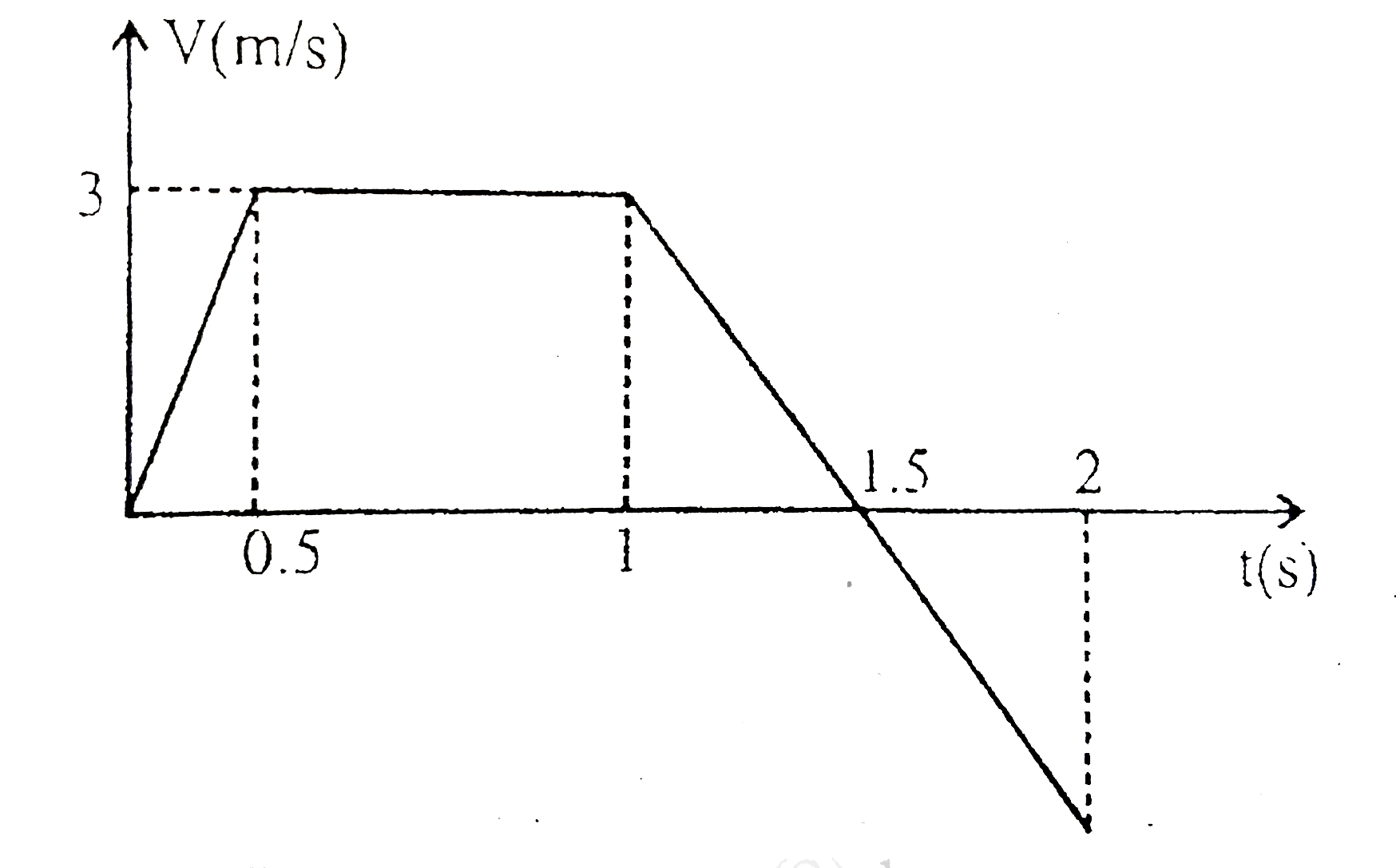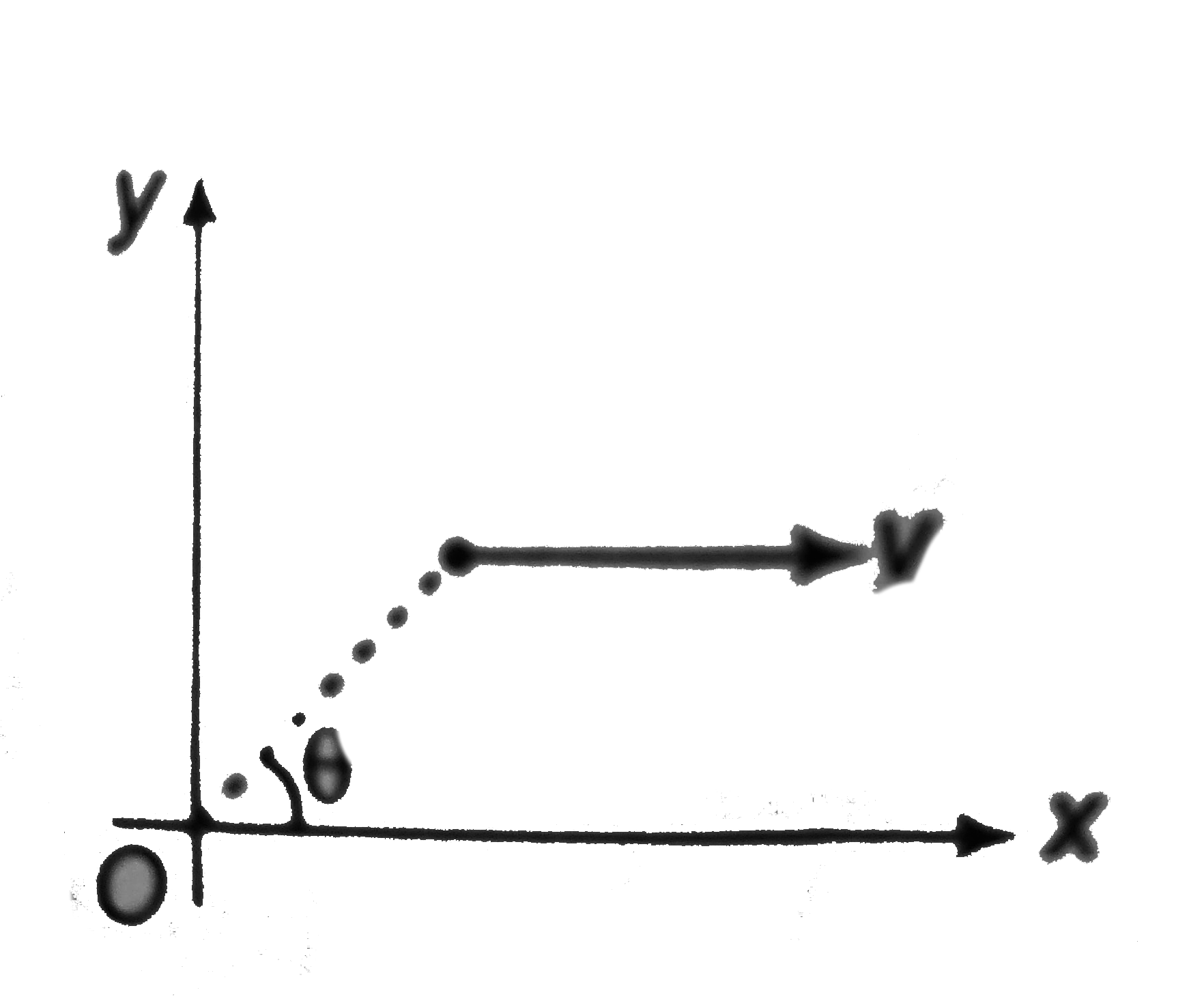A particle is at rest at x=a. A force →F=bx2→i
begins to act on the particle. The particle starts its motion, towards the origin, along X-axis. Find the velocity of the particle, when it reaches a distance x from the origin .
F=−bx2⇒ddt⇒(p)=−bx2
ddt(mv)=−bx2⇒mdvdxdxdt=−bx2
mvdv=−bx2dx⇒vdv=−bmx2dx
v∫0vdv=x∫a−bmx2dx⇒v22=bm[1x]xa
v22=bm[1x−1a]∴u=√2bm(a−xxa) .
Topper's Solved these Questions
- BOOK - NARAYNACHAPTER - NEWTONS LAWS OF MOTIONEXERCISE - C.U.Q73videos
NEWTONS LAWS OF MOTION
- BOOK - NARAYNACHAPTER - NEWTONS LAWS OF MOTIONEXERCISE - LEVEL -I (C.W)47videos
NEWTONS LAWS OF MOTION
- BOOK - NARAYNACHAPTER - MOTION IN A STRAIGHT LINEEXERCISE - Level 2 H.W29videos
MOTION IN A STRAIGHT LINE
- BOOK - NARAYNACHAPTER - OSCILLATIONSEXERCISE - EXERCISE - IV41videos
OSCILLATIONS
Similar Questions
A particle starts from the origin with a velocity of 2 cm/s and moves along a straight line. If the acceleration of the particle at a distance x cm from the origin be (2x−32)cms2, find the velocity of the particle at a distance 7 cm from the origin.
View SolutionA time varying force, F=2t is acting on a particle of mass 2kg moving along x-axis. velocity of the particle is 4m/s along negative x-axis at time t=0. Find the velocity of the particle at the end of 4s.
View Solution
Knowledge Check
- Question 1 - Select One
A particle starts from rest x = - 2.25 m and moves along the x - axis with the v - t graph as shown. The time when the particle crosses the origin is :
 A0.5 sB1 sC1.5 sD2 s
A0.5 sB1 sC1.5 sD2 s - Question 2 - Select One

A particle mass parallel to x-axis with constant velocity v as shown in the figure. The angular velocity of the particle about the origin OAremains constantBcontinuously increasesCcontinuously decreasesDoscillates. - Question 3 - Select One
A particle is moving along a straight line parallel to x-axis with constant velocity. Its angular momentum about the origin
Adecreases with timeBincreases with timeCremains constantDis zero
A particle at origin starts towards positive direction of x-axis, with an accelerationa. This acceleration can be defined in three ways,(a) a= constant, (b) a=f(x), and (c) a=−f(t). Find the velocity of the particle as a function of time. Also find velocity of the particle when it is at a displacement x from origin. Given that the velocity of the particle at t=0 is v=w.
View SolutionA particle starts from rest at the origin and moves along the positive x direction. Its acceleration a versus position x graph is shown in the figure. The velocity of the particle at x = 6 m is?
View SolutionA single force acts on a particle situated on the negative x-axis. The torque about the origin is in the positive z-direction. The force is
View SolutionIn the figure a graph is plotted which shows the variation of the x- component of a force that acts on a particle moving along the x-axis, with x. The particle starts from rest from the origin. Then
View SolutionThree particles start from the origin at the same time, one with velocity u1 along the x-axis, the second with velocity u2 along the y-axis . Find the velocity of the third particles, along the x=y line so that the three particles may always lie on the same straight line.
View Solution

